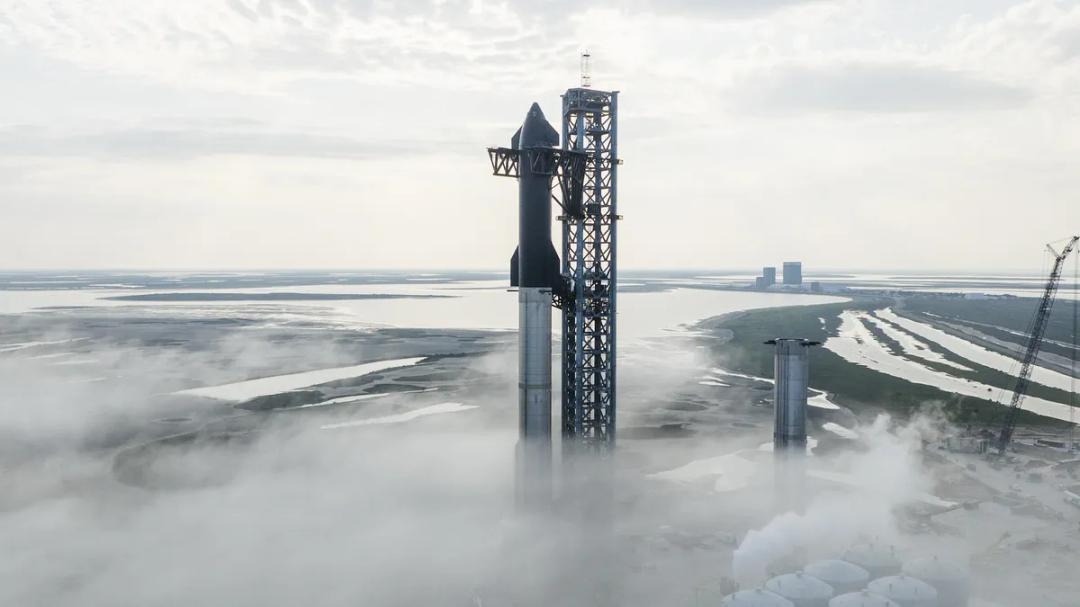Watch SpaceX spray thousands of gallons of water for Starship test

Starship blew a 25-foot-deep crater into the launchpad at SpaceX's Starbase facility when it first took to the skies in April.
SpaceX faced heavy criticism for launching its fully-integrated Starship launch system in April without a water deluge system in place at its South Texas Starbase facility.
The result was a massive crater blown into the launchpad and debris flying far and wide when the world's most powerful rocket first took to the skies.
In preparation for the second orbital launch attempt of Starship, SpaceX is building a powerful deluge system designed to mitigate the fiery force of its Raptor engines. New footage from NASASpaceflight shows the system's first test.
SpaceX's water deluge system
The short test took place at 2:22 pm ET on Monday, July 17, at Starbase in Boca Chica, Texas. The NASASpaceflight video shows thousands of gallons of water shooting out from the orbital launch mount (OLM) during the test.
SpaceX's water deluge system
The short test took place at 2:22 pm ET on Monday, July 17, at Starbase in Boca Chica, Texas. The NASASpaceflight video shows thousands of gallons of water shooting out from the orbital launch mount (OLM) during the test
The video from NASASpaceflight, embedded below, shows the test from several different angles.
Next, SpaceX will likely conduct a static fire test at the same time as firing the water deluge system in order to test it against the fire of its powerful Raptor engines, 33 of which power Starship at launch.
Most of this water is expected to be "vaporized by the heat of the rocket engines", the FAA explained in the PEA. SpaceX also recently shared footage of a test of its water-cooled steel plates which are also designed to help prevent damage at launch.
SpaceX faces environmental lawsuit
During the April 20 launch of Starship, the massive rocket's 33 Raptor engines on its first stage booster, Booster 7, produced roughly 17 million lbs of thrust at liftoff. That immense power left a 25-foot-deep crater at liftoff and spread debris and dust over a wide area.
An environmentalist group subsequently filed a lawsuit against the FAA, stating that it had not properly assessed the potential negative impact on surrounding ecosystems.
A while after the group filed its complaint, SpaceX filed a motion asking to become a co-defendant in the lawsuit. The private space company argued it should be involved as the future of the Starship program was at stake.
SpaceX wrote in its motion that "further licensing of the Starship/Super Heavy Program could be significantly delayed" by the lawsuit.
While SpaceX hopes its water deluge system will help to prevent this type of impact in future launches, there is still plenty of debate about the environmental impact of Starship. At the same time, SpaceX is under pressure to meet its deadlines for Starship, which is scheduled to take the first astronauts back to the lunar surface since Apollo 17 for NASA's upcoming Artemis III missions in 2025 or 2056.
Elon Musk recently stated that Starship could fly again within about eight weeks' time, though the FAA lawsuit will likely have to be cleared up before the government agency gives SpaceX the greenlight for another orbital launch attempt

















